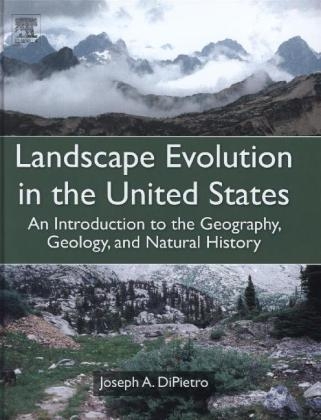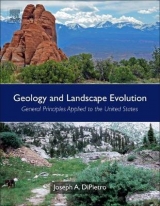
Landscape Evolution in the United States
Elsevier Science Publishing Co Inc (Verlag)
978-0-12-397799-1 (ISBN)
- Titel erscheint in neuer Auflage
- Artikel merken
Landscape Evolution in the United States is an accessible text that balances interdisciplinary theory and application within the physical geography, geology, geomorphology, and climatology of the United States. Landscape evolution refers to the changing terrain of any given area of the Earth's crust over time. Common causes of evolution (or geomorphology—land morphing into a different size or shape over time) are glacial erosion and deposition, volcanism, earthquakes, tsunamis, tornadoes, sediment transport into rivers, landslides, climate change, and other surface processes. The book is divided into three main parts covering landscape components and how they are affected by climactic, tectonic and ocean systems; varying structural provinces including the Cascadia Volcanic Arc and California Transpressional System; and the formation and collapse of mountain systems.
The vast diversity of terrain and landscapes across the United States makes this an ideal tool for geoscientists worldwide who are researching the country’s geological evolution over the past several billion years.
Joseph A. DiPietro is Professor of Geology at the University of Southern Indiana. His research interests are in the fields of structural geology, tectonics, and metamorphism. He has been on the faculty at University of Southern Indiana since 1991 where he teaches Physical Geology, Landscapes and Geology of North America, Mineralogy, Structural Geology, and Tectonics. Most of his research has been on the tectonics of the Pakistan Himalaya where he mapped along the suture zone that separates India from Asia. He has also worked for the New York State Geological Survey mapping in the Adirondack Mountains and for the Idaho Geological Survey mapping in the Clearwater Mountains and he has conducted mapping and research in the Green Mountains of Vermont.
Part I – Keys to Understanding Landscape Evolution 1. The Tortoise and the Hare 2. Component: The Rock/Sediment Type 3. Component: The Structural Form 4. Mechanisms That Impart Change to Landscape 5. Forcing Variable: The Tectonic System 6. Forcing Variable: The Climatic System 7. Forcing Variables: Sea Level and Isostasy 8. Interaction of Tectonics, Climate, and Time Part II – Structural Provinces 9. Unconsolidated Sediment 10. Nearly Flat-Lying Sedimentary Layers 11. Crystalline-Cored Mid-Continent Anticlines and Domes 12. Foreland Fold and Thrust Belts 13. Crystalline Deformation Belts 14. Young Volcanic Rocks of the Cordillera 15. Normal Fault-Dominated Landscapes 16. Cascadia Volcanic Arc System 17. California Transpressional System 18. The Story of the Grand Canyon Part III – Mountain Building 19. Early Theories on the Origin of Mountain Belts 20. Keys to the Interpretation of Geological History 21. Tectonic Style, Rock Successions, and Tectonic Provinces 22. Formation, Collapse, and Erosional Decay of Mountain Systems 23. The Appalachian Orogenic Belt: An Example of Compressional Mountain Building 24. The Cordilleran Orogenic Belt
| Sprache | englisch |
|---|---|
| Maße | 216 x 276 mm |
| Gewicht | 1600 g |
| Themenwelt | Naturwissenschaften ► Geowissenschaften ► Geologie |
| ISBN-10 | 0-12-397799-1 / 0123977991 |
| ISBN-13 | 978-0-12-397799-1 / 9780123977991 |
| Zustand | Neuware |
| Haben Sie eine Frage zum Produkt? |
aus dem Bereich



